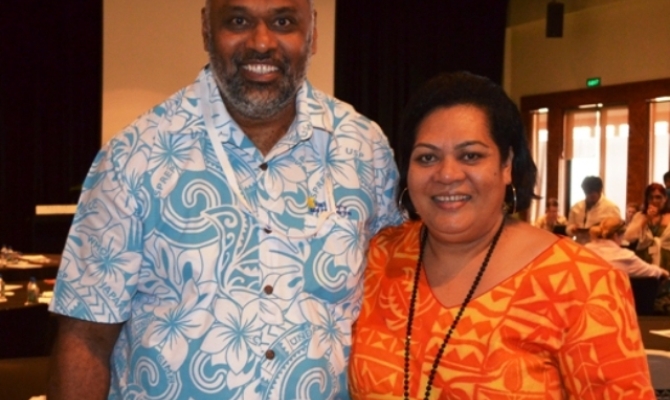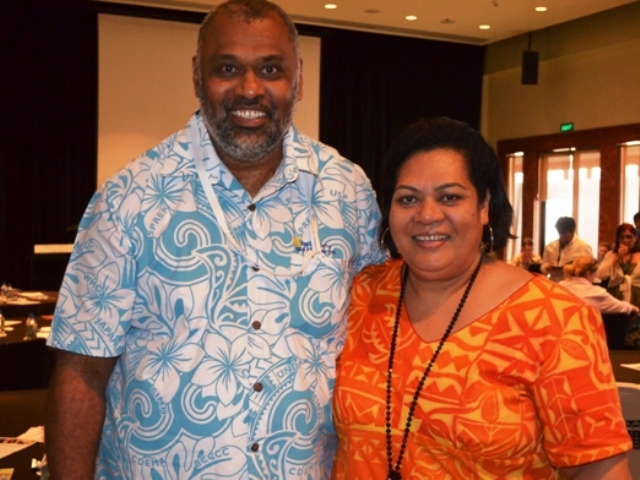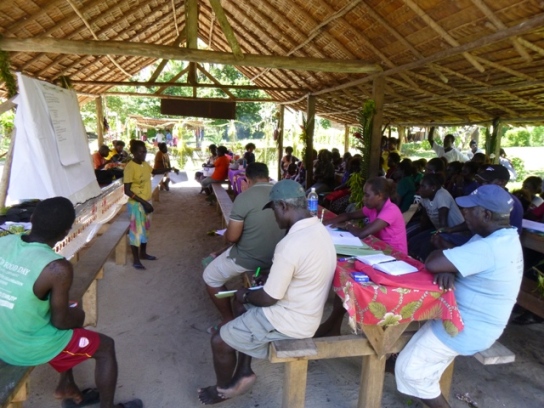
Climate Change Resilience
2 June, Suva, Fiji - Coined as the SRDP, the Strategy for Climate and Disaster Resilient Development in the Pacific, this strategy is to strengthen work happening in the Pacific at the regional level by bringing together two key issues under one guiding regional framework.
Tomorrow in Suva, Fiji, all key stakeholders and national agencies in the fields of weather, climate services, climate change and disaster risk management will meet to have their final input to the newly drafted Strategy. This is a culmination of work that started in 2011 which included literature reviews, extensive consultation and requests for input and discussions at various meetings.
Discussions at the review tomorrow will focus on the three goals of the draft plan, these are strengthened climate change adaptation and disaster risk reduction, low carbon development and, strengthened disaster preparedness, response and recovery.
This will be led by regional partners of the SRDP - Secretariat of the Pacific Regional Environment Programme (SPREP), the Secretariat of the Pacific Community (SPC), United Nations Office for Disaster Risk Reduction (UNISDR), United Nations Development Program, University of the South Pacific and the Pacific Islands Forum Secretariat.
 Mosese Sikivou (Manager Community Risk programme, SPC) and Dr Netatua Pelesikoti (Director Climate Change Division, SPREP) at the Joint Meeting of the Pacific Platform for Disaster Risk Management (DRM) and Pacific Climate Change Roundtable in July 2013
Mosese Sikivou (Manager Community Risk programme, SPC) and Dr Netatua Pelesikoti (Director Climate Change Division, SPREP) at the Joint Meeting of the Pacific Platform for Disaster Risk Management (DRM) and Pacific Climate Change Roundtable in July 2013
"The strategy is designed to guide key stakeholders on what they should do to achieve the goals of the SRDP in the context of resilient development for all at all levels," said Dr. Netatua Pelesikoti, the Climate Change Director of SPREP.
"We are not introducing new factors but we are promoting smart and informed integrated approaches to dealing with climate change related hazards and extreme events both natural and anthropogenic. This Strategy is reflective of the work done at the national and regional level."
Work to strengthen resilience, integrating climate change and disaster risk management in the Choiseul Province of the Solomon Islands and Abaiang in Kiribati are examples of joint efforts not only in approaches and methodology but of partnerships that are at work.

Joint National Action Plans on Climate Change and Disaster Risk Management are currently implemented. Tonga and Tuvalu are amongst the Pacific island countries that have completed their national JNAPS with ongoing support from SPREP and SPC being provided to all remaining countries to complete their JNAPS.
"This strategy will help enhance the work in our Pacific islands to help them strengthen resilience against climate change and disasters, as that is our overarching goal. To ensure our islands have strengthened resilience so that our Pacific people, their environment and livelihoods are protected."
The Strategy for Climate and Disaster Resilient Development in the Pacific (SDRP) will be the discussed tomorrow, Tuesday 3 June at the Novotel Hotel in Suva, Fiji.
Tomorrow in Suva, Fiji, all key stakeholders and national agencies in the fields of weather, climate services, climate change and disaster risk management will meet to have their final input to the newly drafted Strategy. This is a culmination of work that started in 2011 which included literature reviews, extensive consultation and requests for input and discussions at various meetings.
Discussions at the review tomorrow will focus on the three goals of the draft plan, these are strengthened climate change adaptation and disaster risk reduction, low carbon development and, strengthened disaster preparedness, response and recovery.
This will be led by regional partners of the SRDP - Secretariat of the Pacific Regional Environment Programme (SPREP), the Secretariat of the Pacific Community (SPC), United Nations Office for Disaster Risk Reduction (UNISDR), United Nations Development Program, University of the South Pacific and the Pacific Islands Forum Secretariat.
 Mosese Sikivou (Manager Community Risk programme, SPC) and Dr Netatua Pelesikoti (Director Climate Change Division, SPREP) at the Joint Meeting of the Pacific Platform for Disaster Risk Management (DRM) and Pacific Climate Change Roundtable in July 2013
Mosese Sikivou (Manager Community Risk programme, SPC) and Dr Netatua Pelesikoti (Director Climate Change Division, SPREP) at the Joint Meeting of the Pacific Platform for Disaster Risk Management (DRM) and Pacific Climate Change Roundtable in July 2013"The strategy is designed to guide key stakeholders on what they should do to achieve the goals of the SRDP in the context of resilient development for all at all levels," said Dr. Netatua Pelesikoti, the Climate Change Director of SPREP.
"We are not introducing new factors but we are promoting smart and informed integrated approaches to dealing with climate change related hazards and extreme events both natural and anthropogenic. This Strategy is reflective of the work done at the national and regional level."
Work to strengthen resilience, integrating climate change and disaster risk management in the Choiseul Province of the Solomon Islands and Abaiang in Kiribati are examples of joint efforts not only in approaches and methodology but of partnerships that are at work.

Community consultations in Choiseul Province, Solomon Islands
Joint National Action Plans on Climate Change and Disaster Risk Management are currently implemented. Tonga and Tuvalu are amongst the Pacific island countries that have completed their national JNAPS with ongoing support from SPREP and SPC being provided to all remaining countries to complete their JNAPS.
"This strategy will help enhance the work in our Pacific islands to help them strengthen resilience against climate change and disasters, as that is our overarching goal. To ensure our islands have strengthened resilience so that our Pacific people, their environment and livelihoods are protected."
The Strategy for Climate and Disaster Resilient Development in the Pacific (SDRP) will be the discussed tomorrow, Tuesday 3 June at the Novotel Hotel in Suva, Fiji.